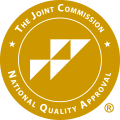Heroin is an opioid narcotic that is synthesized from morphine, which is a naturally-occurring substance extracted from the seed pod of the opium poppy plant.
More About Heroin
Learn More About Heroin
Heroin is often sold on the streets in a white or brown powder; black tar heroin is a black, viscous substance. Sold on the streets as an illegal narcotic, heroin can be abused in a variety of manners: intranasal inhalation, smoking, or by IV drug use. All three routes of administration very quickly deliver the drug into the bloodstream where it quickly crosses the blood-brain barrier, which contributes to the health risks associated with the drug. This is also why heroin overdose is such a major problem for heroin users – as the purity of the drug is not known to users, the ease of entry to all organ systems makes overdose a common occurrence. As heroin is very quickly absorbed into the bloodstream, producing immediate effects, it can be quite addicting for many people. Addiction is a chronic, relapsing disease that is characterized by changes in the brain and uncontrollable drug-seeking behaviors.
Heroin, a central nervous depressant that easily slows down vital bodily functions such as breathing and heart rate, is often abused with a variety of other drugs and alcohol, which serves to increase its potency. When combined with another central nervous system depressant, such as alcohol or benzodiazepines, heroin abuse can lead to life-threatening risks for respiratory depression and failure. Combining heroin with stimulants, such as cocaine or methamphetamines, can lead to severe cardiac complications such as heart attack or stroke. Heroin is a very potent, highly addictive, illegal street drug that can lead to serious complications in all areas of an addict’s life.
Statistics
Statistics on Heroin Abuse & Addiction
In 2011, 1.6% of people in the United States, or 4.2 million people aged 12 and over reported having used heroin at least once in their lifetime. It’s estimated that about 23% of people who experiment with heroin later become physically addicted to it.
What Causes Heroin Use?
Learn About the Causes and Risk Factors for Heroin Addiction
Generally, it’s believed that heroin addiction is not caused by a single contributing factor, but is rather caused by a combination of genetic, physical, and environmental factors working together. The most common causes and risk factors for heroin abuse include:
Genetic: Addiction often runs in families. People who have a first-degree relative who struggles with addiction are at a greater risk for developing addiction to heroin or other drugs. It’s worth noting that not every person who becomes an addict has a family history of addiction.
Physical: As heroin causes the release of pleasurable neurotransmitters in the brain, individuals who have a deficiency in these neurotransmitters may seek out heroin or other opiates in order to feel sensations of pleasure.
Environmental: People who were raised in an environment in which addiction was a part of daily life are at increased risk for developing addiction later in life. Additionally, people who begin to abuse other drugs at earlier ages are at higher risk for developing addiction themselves.
Risk Factors:
- Being male
- Peer pressure
- Other psychological or mental illness
- Lack of family involvement
- Usage of a highly-addictive drug, such as heroin
- Conduct disorder in childhood
Signs of Heroin Abuse
Signs and Symptoms of Heroin Addiction
The symptoms of heroin abuse will vary depending upon length of abuse, the amount used, the frequency of use, usage of other drugs or alcohol, and individual genetic makeup. The most common symptoms of heroin abuse include:
Behavioral symptoms:
- Failure to stop using heroin after trying to kick the habit
- Ensuring there is always access to the drug
- Stealing and engaging in other behaviors to obtain the drug
- Spending money on the drug even if there’s no money available
- Engaging in risky activities while high
- Focusing more and greater time and energy on getting and using the drug
- Using the drug to escape emotional problems
- Lying to cover up heroin abuse
- Slurred, garbled speech
- Stashing heroin around the house
- Increasing legal problems
- Social withdrawal
- Withdrawal from once-enjoyable activities
- Stashing drug paraphernalia around the house
- Increased libido
- Impulsive behaviors
Physical symptoms:
- Wearing long sleeves to hide track marks
- Warm flushing of the skin
- Decreased respiration rate
- Increased lung infections
- Dry mouth
- Heaviness in extremities
- Slowed speech
- Slow, unsteady gait
- Constricted pupils
- Drooping of eyelids
- Nausea and vomiting
- Constipation
- Track marks and scars
Cognitive symptoms:
- Going “on the nod” – a wakeful and drowsy state
- Clouded mental function
Psychosocial symptoms:
- Depression
- Mood swings
- Anxiety
- Irritability
- Euphoria
- Addiction
- Tolerance
- Withdrawal symptoms
- Hallucinations
- Delusions
- Psychosis
- Worsening of mental illnesses
- Worsening emotional wellbeing
Effects of Heroin
The Effects of Heroin Addiction
The long-term effects of heroin abuse can cause complications in virtually every area of an addict’s life. The long-term effects of heroin abuse are variable, based upon length of abuse, amount used, purity of the heroin, prior risk-taking behaviors, as well as individual genetic makeup. The most common effects of heroin abuse include:
- Addiction
- Collapsed veins
- Pericarditis
- Infection of heart valves
- Liver disease
- Lung disease
- Pneumonia
- Cellulitis
- Abscesses at injection sites
- Strokes
- Heart attacks
- Seizures
- Suicide
- Accidental overdose
- Death
Withdrawal & Overdose
Learn What Happens During Heroin Withdrawal & Overdose
Overdose of heroin can be potentially life-threatening and each user runs the risk for overdose each time he or she uses the drug, as the purity will vary from dealer to dealer and even batch to batch.
Heroin overdose symptoms include:
Breathing:
- Slow, labored breathing
- Shallow breathing
- No breathing
Eyes, ears, nose, throat:
- Dry mouth
- Pinpoint pupils
- Tongue discoloration
Cardiovascular system:
- Extremely low blood pressure
- Weak, thready pulse
Skin:
- Cyanosis – bluish nails and lips
GI tract:
- Constipation
- Spasms of GI tract
CNS symptoms:
- Muscle spasms
- Drowsiness and sedation
- Disorientation
- Delirium
- Coma
- Death
When an individual becomes physically dependent upon heroin, he or she will experience withdrawal symptoms when drug use is ceased or cut back dramatically. Withdrawal symptoms tend to appear within a few hours after the last dosage and peak within 48 to 72 hours. It’s important for people struggling to kick the habit to do so in a medically-monitored detox program to prevent and treat any dangerous side effects.
Heroin withdrawal symptoms include:
- Strong drug cravings
- Restlessness
- Muscle and bone pain
- Insomnia
- Diarrhea and vomiting
- Cold flashes with goose bumps (“cold turkey”)
- Involuntary kicking movements (“kicking the habit”)
- Death – in chronic abusers who are in poor health
Co-Occurring Disorders
Heroin Addiction and Co-Occurring Disorders
Individuals who struggle with heroin addiction often have co-occurring mental illnesses. The most common co-occurring disorders include:
- Post-traumatic stress disorder
- Other substance abuse
- Anxiety disorders
- Depressive disorders
- Bipolar disorder
- Schizophrenia
- Antisocial personality disorder


















